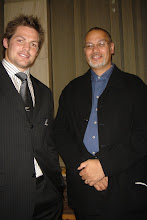 The fighting that swept New Zealand during the early nineteenth century is usually, if inaccurately, called the 'Musket Wars' - a period moniker that stands in defiance of the military point that muskets were not key weapons until the last third of the period. The more crucial European product was the potato, which, as has been argued, effectively fuelled the conflict.` This helped translate the wars to a stunning scale, dwarfing the New Zealand Wars that followed. There were over 500 engagements. Taua thundered from one end of New Zealand to the other. Up to 40,000 Maori were dislocated, either through enslavement or migration," nearly half the estimated total population of the late eighteenth century. To this can be added casualties of perhaps 20,000 - spread over the period, but still about 19 or 20 percent of the estimated population.
The fighting that swept New Zealand during the early nineteenth century is usually, if inaccurately, called the 'Musket Wars' - a period moniker that stands in defiance of the military point that muskets were not key weapons until the last third of the period. The more crucial European product was the potato, which, as has been argued, effectively fuelled the conflict.` This helped translate the wars to a stunning scale, dwarfing the New Zealand Wars that followed. There were over 500 engagements. Taua thundered from one end of New Zealand to the other. Up to 40,000 Maori were dislocated, either through enslavement or migration," nearly half the estimated total population of the late eighteenth century. To this can be added casualties of perhaps 20,000 - spread over the period, but still about 19 or 20 percent of the estimated population.Potatoes were introduced to Nga Puhi in 1794, becoming a key staple with better food value for weight than kumara, easier to cultivate and store, and - unlike kumara - tillable by slaves and women. The result was a logistical revolution; potatoes effectively fuelled the long range taua that made the 'Musket Wars' so different from any fighting that had gone before. Slaves brought back from these massive raids were put to work tending potato patches, freeing up labour to create even larger taua.By the 1830s, European blankets, foodstuffs and consumer goods were well distributed through Maori society. By this time most toa had a flintlock musket ngutu parera` - sometimes Tower flintlocks, more often the cheap Birmingham built 'trade muskets' sold by unscrupulous merchants in spite of missionary protests.` Others had the more lethal tupara, the double-barrelled shotgun.
Matthew Wright 'Two Peoples, One Land'
As far as the 'musket wars' are known to historians and others, these beliefs about increased warfare and blood-lust after the introduction of muskets represent the only generalisations about the period they are prepared to accept or have adopted. The 'musket wars' have in fact suffered from an attitude in historical and popular opinion (increased perhaps by some of the spate of late twentieth-century and early twenty-first-century reports to the Waitangi Tribunal on pre- 1840 events) that can be characterised as the 'Te Rauparahaisation' or 'Hongi Hika-isation' of the 'musket war' period.'
That is, in the opinion of many scholars, every event in the 1820s or 1830s is an action of, or a consequence Of' the Napoleon, like ambitions and personal talents - the personal agendas - of these two supremely successful chiefs or a few of their 'generals'. Perhaps because of the small size of this country and the limited number of documented Maori campaigns as compared with, say, tribal warfare in Africa in the eighteenth and nineteeth centuries, it is believed that these two individuals and their activities reigned supreme over Maori events before 1840.
Rather than regarding their activities in the period as typical of a phenomenon common to and symptomatic of developments in the whole of Maori society, the actions of these two chiefs have been treated as unique, and as formative of the whole period. If any individuals are chosen by historians to typify the period, it is these two.
Angela Ballara "Taua'.





No comments:
Post a Comment